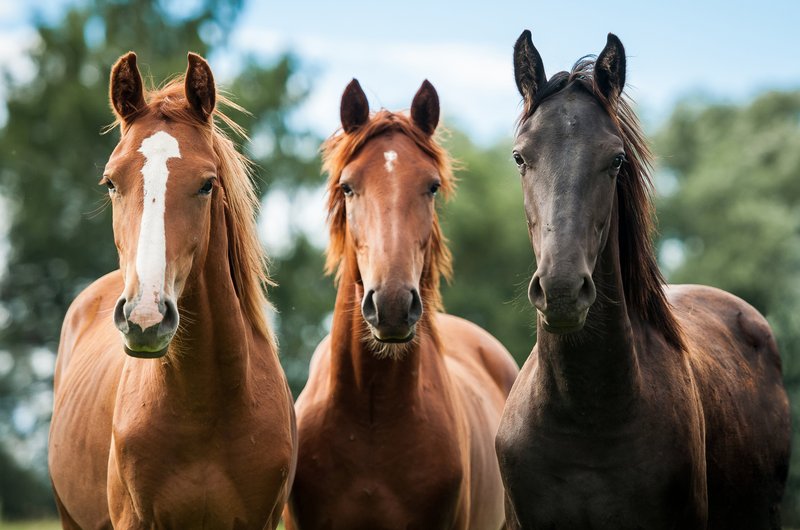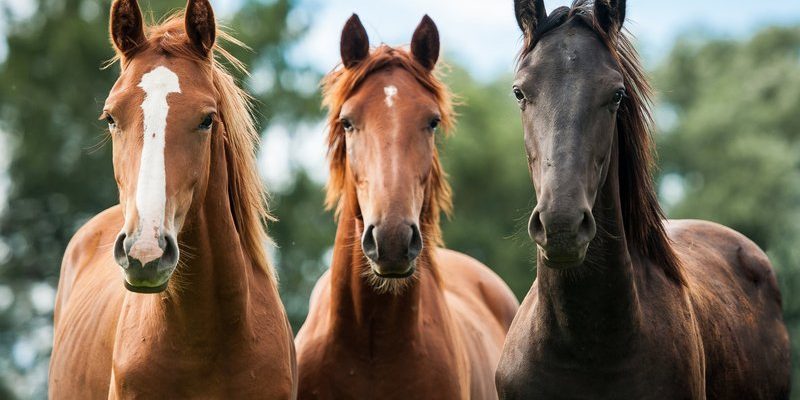
Understanding how horses make it in these tough climates is like uncovering the secrets of an ancient puzzle. Each piece—whether it’s their amazing physiology, behavior, or social dynamics—plays a vital role in their survival. So, if you’re curious about how horses endure extreme weather, adapt to scarce resources, and maintain their health, let’s dive deeper into the fascinating world of these incredible animals.
1. Physical Adaptations: Nature’s Design
Horses have evolved over thousands of years to adapt to various environments, and their bodies are finely tuned to withstand different conditions. For starters, their thick coats serve as insulation during cold months. In fact, many horse breeds grow a winter coat that traps heat, keeping them warm even in freezing temperatures. You might find that during summer, they shed this coat to allow for better heat dissipation—kind of like wearing a cozy sweater only when it’s chilly out.
Not only that, but their hooves are another fantastic example of adaptation. Strong and resilient, horse hooves are designed to handle rocky terrains and uneven ground, which is common in harsh environments. The outer hoof wall provides protection, while the inner structures support their weight and contribute to shock absorption. This means that whether they’re traversing a rocky mountain or a sandy desert, their feet can manage the terrain without getting hurt.
2. Diet and Foraging Skills
Horses are natural foragers, often roaming vast distances to find food. In harsh environments, where forage is limited, their ability to eat a variety of plants becomes crucial. They possess a unique digestive system designed to extract nutrients from tough grasses and fibrous plants that many other animals would pass up. Their large cecum and colon allow for efficient digestion of rough forage, which is especially important when nutrient-rich options are scarce.
You might be wondering how horses manage to find enough food in such tough places. Well, it turns out that their excellent sense of smell and keen eyesight help them locate hidden grasses or shrubs that might be just out of sight. In many cases, horses will travel in groups, allowing them to share knowledge of food sources. This social behavior not only boosts their chances of finding food but also helps them stay safe from predators.
3. Water Conservation Strategies
Water is life, especially in arid regions where it’s scarce. Horses have developed some impressive strategies for conserving water in tough environments. For example, they can tolerate a broader range of body temperatures compared to humans, meaning they can go longer without drinking. When they do find water, they often consume larger quantities to stay hydrated.
Another fascinating aspect is how they utilize their diet to get hydration. Many grass species and plants have high water content, providing essential moisture. Horses have also been observed eating snow for hydration during winter when liquid water is hard to come by. This resourceful behavior emphasizes their adaptability and resilience in the face of harsh conditions.
4. Social Structures and Herd Dynamics
Horses are social animals that thrive in groups. In harsh environments, their social structures become even more important. Living in a herd offers protection against predators and harsh weather, and it helps them find resources more efficiently. The leadership of older, experienced horses ensures that the herd knows where to find food and water, making survival a collective effort.
You might see horses in a herd taking turns keeping watch while others graze or rest. This cooperative behavior enhances their chances of survival, especially in areas where threats are present. Moreover, the social bonds formed within the herd foster a strong support system— horses will often groom each other, which strengthens those connections and contributes to overall well-being.
5. Behavioral Adaptations: Smart Survival Tactics
Behavior plays a huge role in how horses manage to survive in harsh environments. One remarkable behavior is their instinct to seek shelter during extreme weather. Whether it’s a shady grove during a blistering heatwave or a natural cave during a snowstorm, horses instinctively know to find refuge. This behavior not only helps protect them from the elements but also conserves energy.
Another interesting aspect is how horses communicate with one another. They utilize vocalizations, body language, and even facial expressions to alert the herd about potential dangers or changes in their environment. For instance, if one horse spots a predator, it may whinny or shift its body to signal danger. This quick communication helps the entire herd stay alert and take action when needed.
6. Health and Adaptation to Disease
In harsh environments, horses are often exposed to various diseases and parasites. Their immune systems have adapted over time to handle these challenges. For instance, in areas where parasites are prevalent, horses have developed resistance, allowing them to thrive despite these threats. Regular exposure to pathogens in the wild also helps strengthen their immune response, making them hardier animals.
Keeping a watchful eye on their health is crucial, especially when resources are limited. If a horse shows signs of illness or weakness, they might be at a greater risk. That’s why herd dynamics play a role—healthier horses often help care for their weaker companions by providing protection and ensuring they have access to food and water.
7. Human Intervention: Helping Horses in Harsh Environments
While wild horses are incredible survivors, they sometimes need a helping hand, especially in environments altered by human activity. Conservation efforts, such as establishing protected areas and providing supplementary feeding during harsh winters, play a vital role in maintaining healthy horse populations. These efforts ensure that horses can thrive despite the challenges posed by changing climates and landscapes.
Moreover, understanding their natural behaviors and needs can help horse owners and caretakers provide better environments. For instance, maintaining a herd environment, ensuring access to appropriate forage, and facilitating safe shelter can all contribute to a horse’s well-being in challenging settings. Humans can certainly make a significant difference in the lives of these amazing creatures.
In summary, horses have evolved remarkable adaptations to survive in harsh environments, from their physical features and dietary habits to their social structures and behaviors. As we appreciate their resilience, we must also consider how we can support them in their fight for survival, ensuring that these magnificent animals can continue to thrive in diverse conditions around the world. Whether in the wild or in our care, horses deserve our respect and understanding as they navigate the challenges of their environments.

